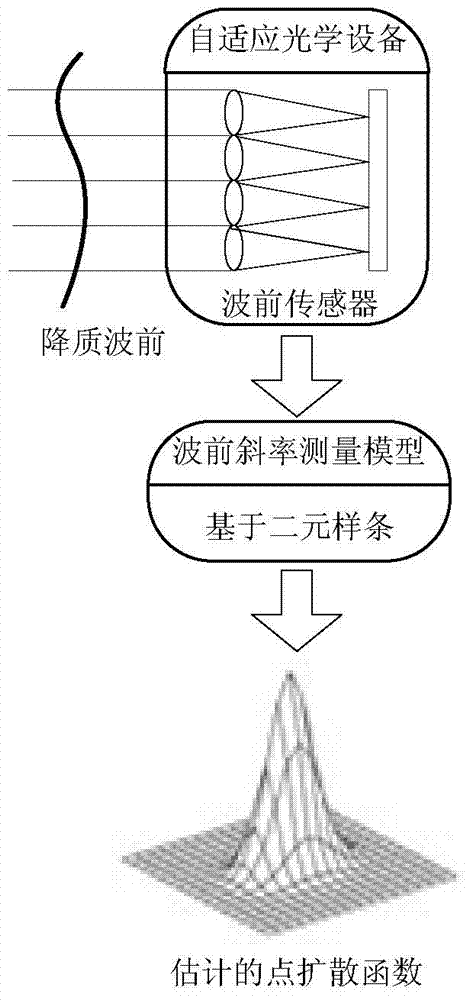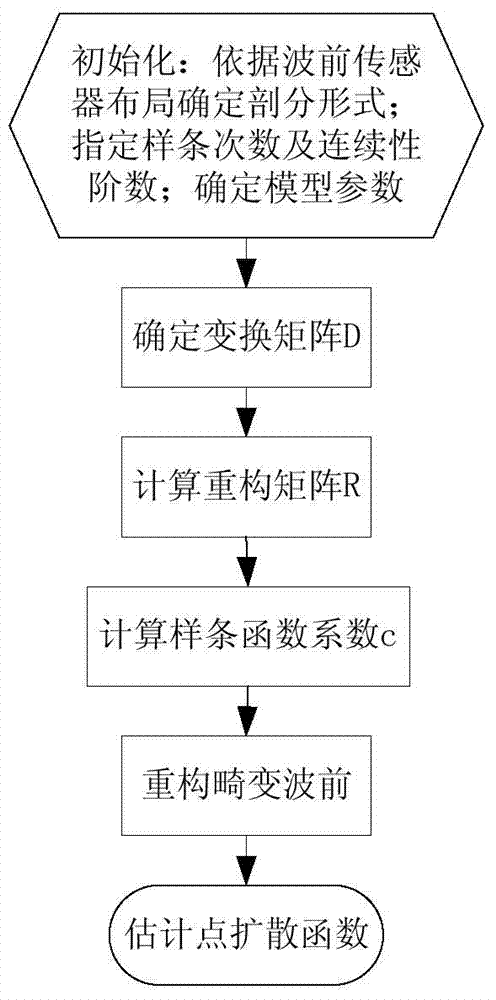Point diffusion function estimation method in self-adaptive optical imaging
A point spread function and adaptive optics technology, applied in the field of space target detection and recognition, can solve problems affecting the estimation accuracy of point spread function, cumbersome mathematical derivation and calculation, and reduced accuracy of wavefront reconstruction results
- Summary
- Abstract
- Description
- Claims
- Application Information
AI Technical Summary
Problems solved by technology
Method used
Image
Examples
Embodiment
[0091] In order to make the object, technical solution, advantages, etc. of the present invention clearer, the present invention will be further described in detail below in combination with specific examples and with reference to the accompanying drawings. The invention is a method for estimating point spread function of adaptive optics imaging based on multivariate splines. figure 2 For the specific process of estimating the point spread function of the present invention, the following are respectively described in detail:
[0092] 1) Initialization phase. In order, firstly, according to the layout of the microlens array of the wavefront sensor, the form of the triangulation on the wavefront simplex region is determined. Here, the wavefront sensor with 54 sub-apertures is taken as an example, as shown in image 3 As shown, the layout of the regular hexagonal microlens array is triangular in nature, and several triangulations can be determined intuitively according to diffe...
PUM
 Login to View More
Login to View More Abstract
Description
Claims
Application Information
 Login to View More
Login to View More - R&D
- Intellectual Property
- Life Sciences
- Materials
- Tech Scout
- Unparalleled Data Quality
- Higher Quality Content
- 60% Fewer Hallucinations
Browse by: Latest US Patents, China's latest patents, Technical Efficacy Thesaurus, Application Domain, Technology Topic, Popular Technical Reports.
© 2025 PatSnap. All rights reserved.Legal|Privacy policy|Modern Slavery Act Transparency Statement|Sitemap|About US| Contact US: help@patsnap.com



